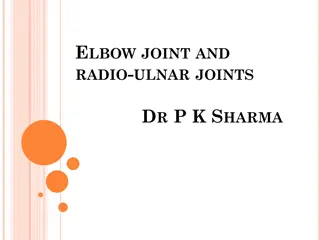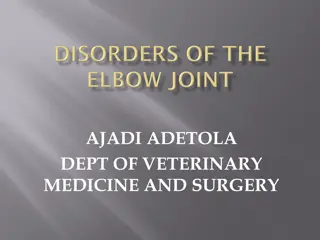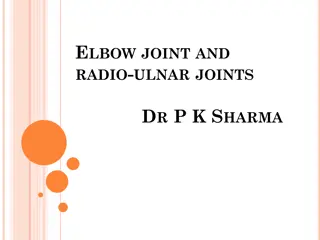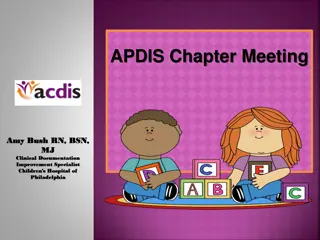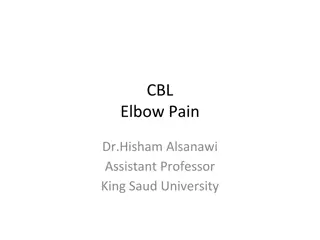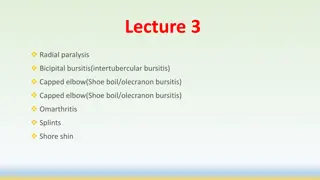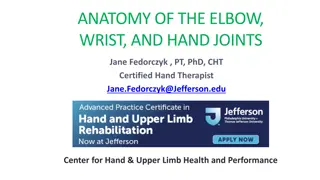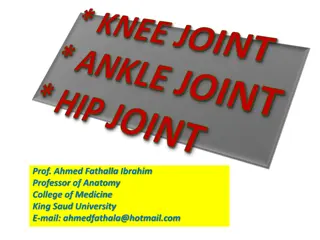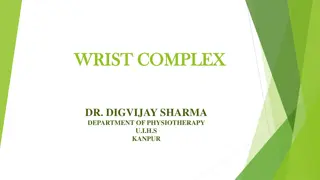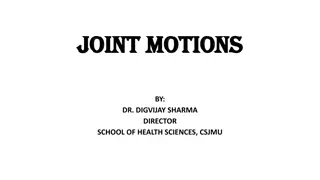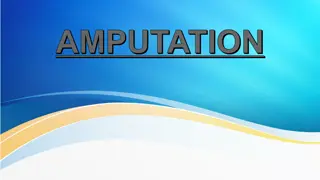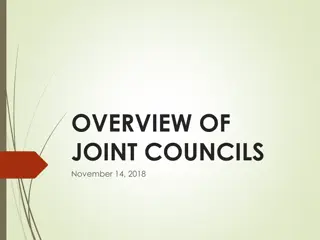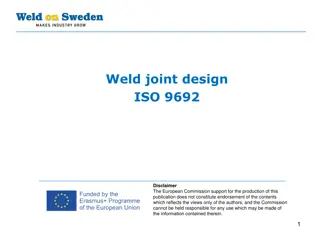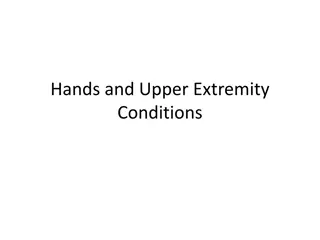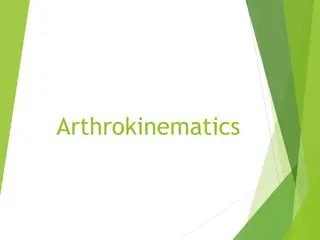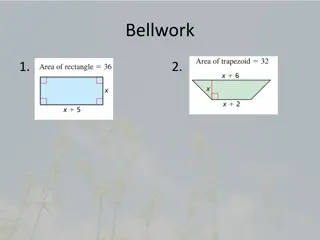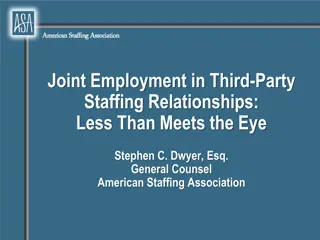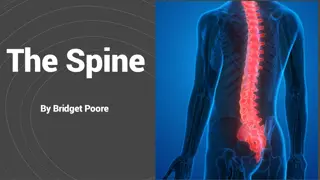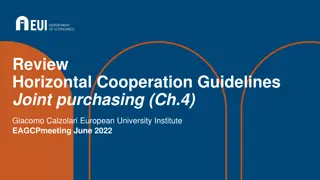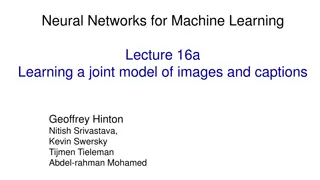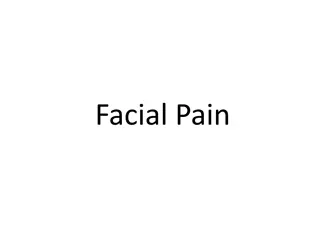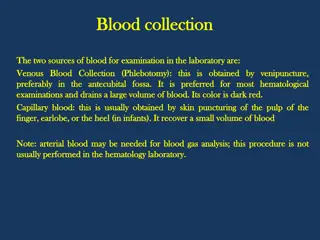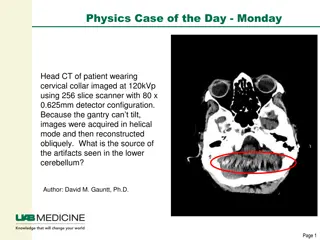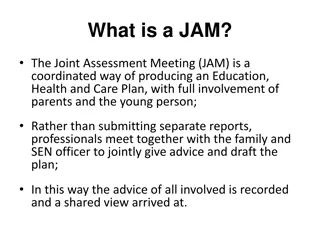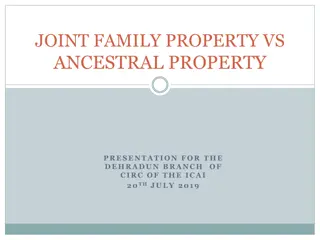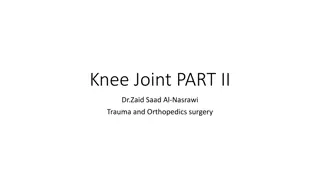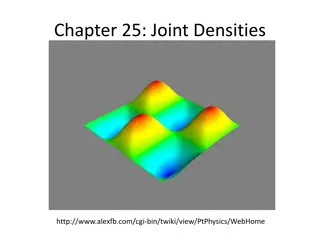Understanding the Cubital Fossa and Elbow Joint Complex
This detailed guide covers the definition, boundaries, roof, floor, contents, and clinical importance of the cubital fossa. It also explores the surface anatomy and articulations of the elbow joint complex, highlighting stabilizing factors and common joint problems. Additionally, it delves into the structural components of the elbow joint, including the ulnohumeral and radiohumeral articulations within the fibrous capsule.
Download Presentation

Please find below an Image/Link to download the presentation.
The content on the website is provided AS IS for your information and personal use only. It may not be sold, licensed, or shared on other websites without obtaining consent from the author. Download presentation by click this link. If you encounter any issues during the download, it is possible that the publisher has removed the file from their server.
E N D
Presentation Transcript
The cubital fossa & The cubital fossa & Elbow Joint Elbow Joint complex complex pp. 753-760
OBJECTIVES OBJECTIVES Define the cubital fossa & its clinical importance Identify the surface anatomy of the elbow region Study the boundaries, roof, floor & contents of the cubital fossa Identify the articulations at the elbow joint complex & recognize its stabilizing factors and movements Take some notes of the common problems of the joints
Definition Definition
Boundaries Boundaries
Roof Roof Skin & superficial fascia of the arm blending with that of the forearm & containing the bicipital aponeurosis with superficial vein & cutaneous nerves
Floor Floor Proximally: Brachialis Distally: Supinator
Contents Contents The ulnar nerve is NOT part of the fossa as it passes behind the medial humeral epicondyle From Medial to lateral: Median nerve: passing between the 2 heads of supinator Brachial artery: dividing into ulnar & radial branches Tendon of biceps brachii: passing towards the radial tuberosity. Radial nerve: dividing into deep & superficial branches.
The Elbow Joint Complex The Elbow Joint Complex Ulnohumeral trochlea of the humerus with the trochlear notch (hinge ) 1 2 Radiohumeral capitulum of the humerus with the radial head (hinge) 3 Proximal radio-ulnar radial head with the radial notch of the ulna & anular ligament (pivot)
Lax anteriorly & posteriorly Fibrous capsule Fibrous capsule Descends ant. From epicondyles & edges of coronoid & radial fossae to coronoid process & anular lig. Descends pos. from epicondyles & edges of olecranon fossa to olecranon & anular lig. i.e. : the capsule is not attached to the radius
Ligaments Ligaments Ulnar (medial) collateral: limits medial deviation Radial (lateral) collateral): limits lateral deviation Anular (of radius): keeps radius in contact with ulna & capitulum.
Ligaments Ligaments Quadrate lig.: joins radial neck to ulna & limits rotation.
Synovial membrane Synovial membrane & fat pads & fat pads Anterior Synovial membrane continuous over all articular surfaces & proximal radius (1 complex) Chocked by anular lig. forming the sacciform recess. 3 fat pads fill the fossae 2 ant. & 1 post.).
Bursae Bursae Many bursae Most important is olecranon bursa (sub tendinous & subcutaneous) Olecranon bursitis (student s elbow) = inflammation of the olecranon bursa caused by trauma, infection or prolonged pressure. The bursa is swollen and is often painful.
Movements Movements Flexion (ulnohumeral joint) Brachialis Biceps brachii Brachioradialis Pronator teres Extension (ulnohumeral joint) Triceps brachii Anconeus (carrying angle) Supination (proximal R-U joint & R-H joint) Biceps brachii (in elbow flexion) Supinator Pronation (proximal R-U joint & R-H joint) Pronator teres Pronator quadratus
The carrying angle The carrying angle Anterior Caused by lateral deviation of the ulna on the humerus during extension because of: Difference in trochlear lip size Action of anconeus
Arterial Anastomosis Arterial Anastomosis
Common Conditions Common Conditions Lateral (Golfer s) & Medial (Tennis) epicondylitis (tendinitis) Repetitive forceful flexion & extension causing inflammation of the common extensor tendons from the lateral epicondyle (Tennis elbow) or the common flexor tendons from the medial epicondyle (Golfer s elbow).
Common Conditions Common Conditions Pulled Elbow (Nursemaid s elbow) Subluxation/Dislocation of radial head from anular ligament due to forceful distraction of the forearm.


